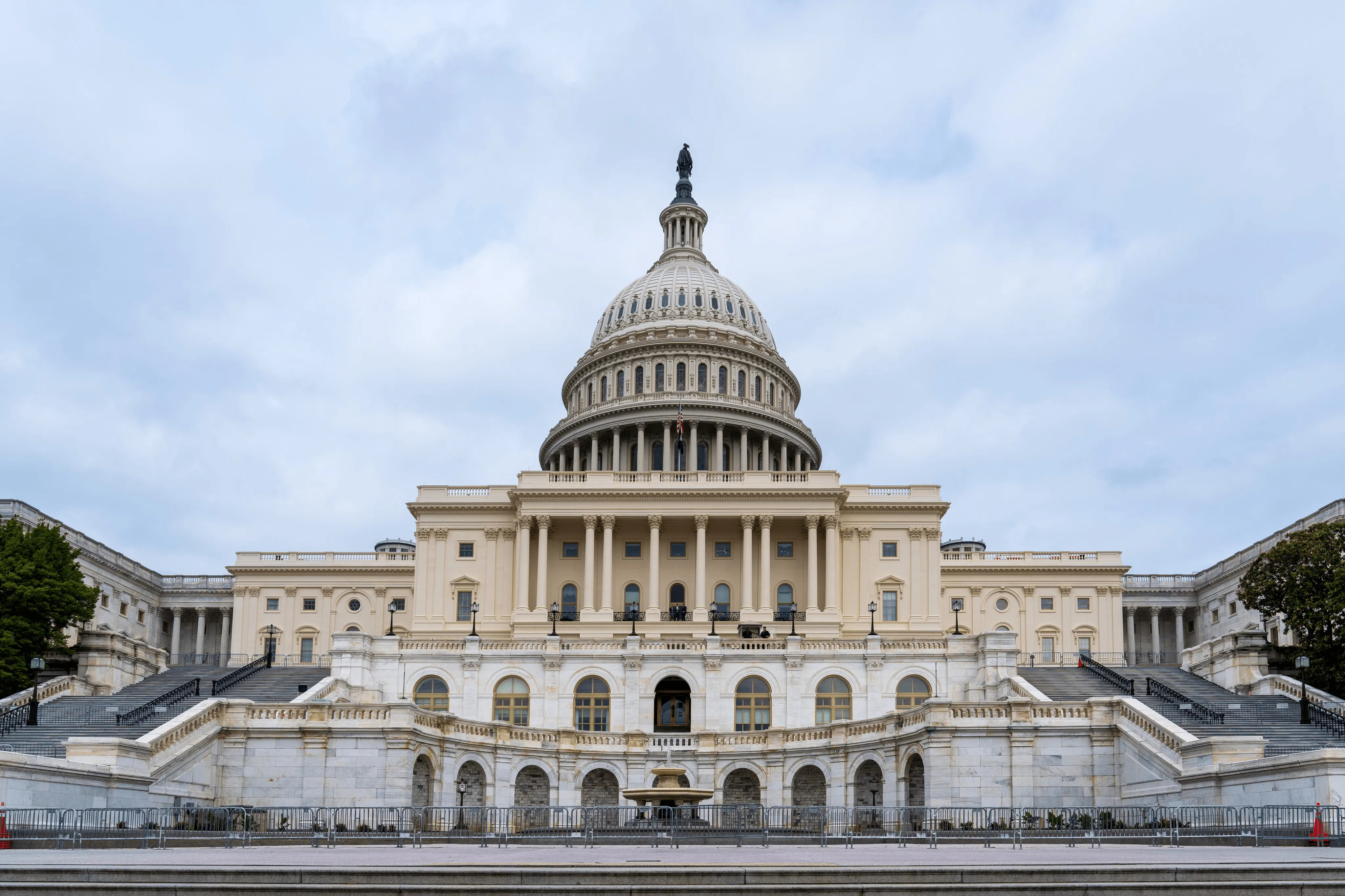

Everything You Need to Know About the R&D Tax Credit
Discover how the R&D tax credit transforms innovation into tax savings. Whether you’re a startup or a Fortune 500 company, Strike Advisory’s boutique expertise maximizes your federal and state credits with a 98% audit success rate.
What is the R&D Tax Credit?
Unlock the power of the R&D tax credit, a federal incentive fueling U.S. innovation since 1981, and made permanent in 2015 via the PATH Act. This dollar-for-dollar tax savings and refund opportunity rewards businesses of all sizes for developing or enhancing products, processes, formulas, or software (IRS Source). From startups to established firms, this permanent tax benefit rewards companies for their efforts to innovate.
No lab or scientists needed—everyday activities like designing new tools, refining processes, or creating software, in industries such as manufacturing, technology, agriculture, and beyond can qualify. In 2025, as market competition and artificial intelligence reshape industries, the R&D tax credit is your key to staying agile, innovative, and competitive.



Who Qualifies For R&D Tax Credits?
- For-profit businesses (C-Corporations), individuals (pass-through entity owners and members, e.g., partnerships (Sole Proprietorships, General Partnerships and Limited Partnerships, LLPs and LLCs) and S corporation shareholders, engaged in research and development activities conducted within the United States or its territories, can qualify for state and federal R&D tax credits.
- Businesses do not need to be based in the US to qualify for the R&D tax credit, but the qualified research activities (QRAs) must be performed in the United States or its territories (e.g., Puerto Rico, Guam, USVI, etc.). The R&D tax credit applies only to qualified research expenses (QREs) incurred for activities conducted within the U.S. or its territories. The IRS does not require the business itself to be a U.S. entity, but the research must occur on U.S. soil.
- A foreign company can claim the credit if it has a U.S. branch, subsidiary, or operations conducting QRAs in the U.S.
- The foreign company must file a U.S. tax return (e.g., Form 1120-F for foreign corporations) to report U.S.-source income and claim the credit.
- For example, A U.K.-based biotech firm with a research lab in California can claim the R&D tax credit for wages and supplies related to drug development conducted in the U.S., provided it files a U.S. tax return.
A business must not be profitable or have paid income taxes to qualify and they can qualify even if the research is unsuccessful. Startups, small businesses and large corporations can qualify for R&D tax credits to reduce their federal and state income taxes, as well as payroll taxes (only for Qualified Small Businesses), by completing and submitting IRS Form 6765.

How Does the R&D Tax Credit Work?
The U.S. R&D tax credit offers a direct reduction in your federal income tax obligation,rewarding businesses for increased spending on qualified research expenses (QREs) compared to prior years.. These expenses cover innovative technical, Eg: scientific or engineering-related activities, like developing or improving products, processes, formulas, or software. QREs typically include:
- Wages for employees conducting, supervising, or supporting qualified research.
- Supplies and materials used in the research process.
- Software and cloud computing costs tied to development.
- Contract research expenses (up to 65% of costs, after deductions) paid to third parties for qualified research.
The U.S. R&D tax credit allows businesses to claim credits retroactively for qualified research expenses (QREs) incurred in the prior three tax years by amending federal tax returns, regardless of whether they paid income taxes. The statute of limitations for amending returns is generally three years from the filing date or two years from the date taxes were paid, whichever is later. For example, a business filing its 2021 tax return on April 15, 2022, has until April 15, 2025, to amend and claim R&D credits for 2021.
Businesses with open tax years, such as startups with no tax liability, can claim credits for QREs within those years, potentially back to their first QRE, and may offset payroll taxes (up to $500,000 annually) if eligible. Unused credits can be carried forward up to 20 years under IRC Section 39, benefiting businesses like pass-through entities (e.g., LLCs, S corporations), as clarified in standard IRS guidance (IRS, 2025). Strike Advisory maximizes retroactive claims and ensures compliance for businesses in the U.S. and its territories (Strike Advisory, 2025).
Both Federal and State R&D tax credits reward innovation, but their rules and benefits differ. Here’s how they compare in 2025
The U.S. R&D tax credit offers a direct reduction in your federal income tax obligation,rewarding businesses for increased spending on qualified research expenses (QREs) compared to prior years.. These expenses cover innovative technical, Eg: scientific or engineering-related activities, like developing or improving products, processes, formulas, or software. QREs typically include:
- Wages for employees conducting, supervising, or supporting qualified research.
- Supplies and materials used in the research process.
- Software and cloud computing costs tied to development.
- Contract research expenses (up to 65% of costs, after deductions) paid to third parties for qualified research.

Recover upwards of 10% of your R&D spend from the IRS. Qualified small businesses can offset payroll taxes up to $250,000 per year.

Most states follow the federal model, allowing up to an additional 20% recovery of expenses. Knowing each state’s R&D tax credit model is where our team thrives!
A federal incentive launched in 1981 to drive U.S. innovation and technical job growth.
State-specific credits complementing the federal program, varying by state.
Typically, 6-10% of qualified research expenses (QREs) above a baseline is provided as a direct financial incentive
Varies by state (e.g., 5-20% of QREs); some states mirror federal QREs, others have unique rules.
Broad, covering industries like tech, manufacturing, agriculture, and more. No lab required.
Similar to federal but may include state-specific activities or industries.
Includes wages, supplies, software/cloud costs, and 65% of contract research expenses.
Often aligns with federal QREs but may exclude certain costs (e.g., contract research in some states).
Unused credits can be carried forward up to 20 years.
Varies by state (e.g., 5-20 years or indefinite (CA, CO, or none (Arizona) in some cases).
QRE’s from the last three years (not including Rev. Rule 82-49)
QRE’s from the last two to four years (ex. CA is 4 years and GA and SC are 2 years)
Reduces federal tax liability, freeing capital for innovation in AI-driven markets.
Lowers state tax liability; some states offer refundable or transferable credits.

Recover upwards of 10% of your R&D spend from the IRS. Qualified small businesses can offset payroll taxes up to $250,000 per year.

Most states follow the federal model, allowing up to an additional 10% recovery of expenses. Knowing each state’s R&D tax credit model is where our team thrives!
Do Your Projects Qualify for the R&D Tax Credit?
To claim the R&D tax credit, your project expenses must pass the 4-Part Test, ensuring they meet qualifying criteria for qualified research activities (QRAs).
This rigorous test is the cornerstone of R&D tax credit eligibility, and proper documentation is key to maximizing your federal and state tax savings. Below, we break down the 4-Part Test into four clear components to help you assess your projects in 2025.
Technological in Nature
The activity must rely on hard sciences, such as engineering, computer science, chemistry, or physics. Examples include: developing software algorithms, designing new machinery, or formulating chemical compounds.
Elimination of Uncertainty:
The activity must address technical unknowns, such as uncertainty about how to achieve the desired outcome or the best method to use. Uncertainty is specific to the taxpayer; you need not discover an industry breakthrough to qualify, so long as the uncertainty was unknown to you (Strike Advisory, 2021). You do not need to publish findings or a research paper, nor must your project succeed.
Permitted Purpose
The project must aim to create or improve a product, process, or formula, or to improve the performance, reliability, or functionality of an existing business component. Examples include enhancing a product’s durability, streamlining a manufacturing process, or improving software efficiency.
Process of Experimentation
The project must involve a systematic process of experimentation, like testing, prototyping, or iterative development, to resolve uncertainties.
Boost Your Bottom Line with Strike Tax. Our Clients Save More.
What Documentation Will I Need to Provide?
To claim the R&D tax credit, you must provide comprehensive documentation to substantiate your qualified research expenses (QREs) and qualified research activities (QRAs) for both federal and state credits. Proper records validate expenses tied to developing or improving inventions, processes, products, software, formulations, or techniques. Below is a breakdown of the key documentation needed in 2025.
Recover upwards of 10% of your R&D spend from the IRS. Qualified small businesses can offset payroll taxes up to $250,000 per year.
Most states follow the federal model, allowing up to an additional 10% recovery of expenses. Knowing each state’s R&D tax credit model is where our team thrives!
Provide federal tax returns (e.g., Form 1120, 1065, or 1040) and financial statements to show overall business expenses and context for QREs, as well as your general ledger.
State-specific financial information is required, often aligning with federal forms, but check state-specific filing requirements. Connecting projects, expenses and staff with the state of their location is the goal. Defining which activities occurred in which states is crucial to defend the state R&D tax study (Strike, 2021).
Submit payroll records for employees involved in QRAs (conducting, supervising, or supporting research), to validate wage QREs.
Similar to federal, but some states may require proof that employees worked in-state or on state-specific projects.
Provide detailed lists of projects involving inventions, processes, new or improved products, software, formulations, or techniques, as well as the dates and staff (including contractors), assigned to each. Determine the uncertainty that each project sought to eliminate, in order to commercialize or implement the improvement, and the processes employed to reduce that uncertainty. Seek to connect projects, people, expenses, uncertainty, and outcome, by tax year.
Similar to federal, but some states prioritize projects aligned with local industries (e.g., AgTech in Iowa).
Include technical records like prototypes, test results, design plans, meeting notes, tickets, project documentation, or emails, showing experimentation and related efforts to resolve uncertainty.
Similar to federal, but states may require additional forms or proof of in-state activities. Check state guidelines.

Recover upwards of 10% of your R&D spend from the IRS. Qualified small businesses can offset payroll taxes up to $250,000 per year.

Most states follow the federal model, allowing up to an additional 10% recovery of expenses. Knowing each state’s R&D tax credit model is where our team thrives!

How to Claim the R&D Credit?
The R&D tax credit provides equivalent tax savings for innovation. Claiming it requires robust documentation and accurate filing for federal and state credits, to maximize benefits and ensure successful defense in the event that the claim is reviewed.
- Projects: Plans or specs for products, processes, or software.
- Payroll: Wages for employees in QRAs.
- Technical: Prototypes, tests, or emails showing experimentation.
- Financial: Expenses (supplies, software, 65% of contract research).
- Determine Eligible Entities: Confirm the business entity (e.g., C-corp, S-corp, LLC, partnership) conducting R&D. Ensure it’s a U.S. taxpayer or, for pass-through entities, that partners/members can claim the credit.
- Define Taxable Periods: Identify the tax year(s) for which you’re claiming the credit (e.g., calendar year 2024 for a 2025 filing). Ensure R&D activities and expenses align with the tax period.
- Identify Controlled Groups: If your business is part of a controlled group (per IRS rules, e.g., parent-subsidiary or brother-sister corporations with common ownership), aggregate QREs and base amounts across all group members to calculate the credit, as IRS treats them as a single taxpayer.
- Pinpoint Business Components: Identify specific products, processes, software, or techniques being developed or improved. Each must meet the IRS four-part test (technological, experimental, uncertainty, business purpose).
- Verify Eligibility: Confirm that expenses tied to these components (wages, supplies, contract research) are U.S.-based and qualify as Qualified Research Expenses (QREs) under IRC Section 41.
Note: This step is complex and crucial to the validity of your R&D tax credit claim. Consult an expert like Strike Advisory, as most accountants and CPAs do not practice in R&D tax credits.

Recent Industries We've Served
Traditional “R&D” industries such as engineering and software development are only the tip of the iceberg for the types of companies who can claim the R&D Tax Credit. Other industries that can qualify for the credit include:
What Are the Benefits of Claiming the R&D Tax Credit?
The R&D tax credit empowers businesses in tech, manufacturing, agriculture, and more with significant financial and strategic advantages. By reducing federal and state tax liabilities, it frees up capital to fuel innovation. Below are the key benefits of claiming the R&D tax credit:
- Proportional reduction in federal (6-10% of QREs) and state (5-20% of QREs) tax liabilities.
- Improved cash flow for reinvestment in innovation, with some states offering refundable or transferable credits.
- Competitive edge through federal and state-supported innovation.
- Carryforward unused credits (up to 20 years federally, 5-15 years or none in states).
- Claim unclaimed credits for prior open tax years (up to 3 years federally, varies by state) via amended returns.
FAQs


Yes, unprofitable businesses, like startups, can claim federal credits to offset payroll taxes (up to $500,000). State credits, often refundable, provide cash flow, reducing tax burdens despite low or no profits.


Yes, routine tasks like testing new designs, coding software, or refining processes can qualify if they meet the 4-Part Test. Federal and state credits reward problem-solving in daily operations.


Developing AI models or automation qualifies if it passes the 4-Part Test. Federal (6-10% of QREs) and state (5-20%) credits cut taxes, fueling AI innovation in 2025.


- IRS Audit Scrutiny: R&D claims can be flagged for audit due to their potential for abuse, which may lead to disallowed credits, penalties, or interest if documentation is inadequate.
- Insufficient Documentation: Lack of detailed records (e.g., project notes, payroll, or contracts) proving activities meet the IRS four-part test or linking expenses to qualifying business components can result in claim denial.
- Misclassification of Expenses: Incorrectly categorizing non-qualifying expenses (e.g., overhead, non-U.S. contract research) as Qualified Research Expenses (QREs) may lead to adjustments, penalties, or repayment of claimed credits.
- Controlled Group Errors: Failing to properly aggregate QREs or base amounts for controlled group members (e.g., commonly owned entities) can lead to miscalculated credits and IRS challenges.
- State-Specific Non-Compliance: States like California or New York have unique R&D credit rules; errors in state form filings or eligibility may result in denied state credits or penalties.
- Retroactive Claim Risks: Amending prior years’ returns to claim credits retroactively increases audit likelihood, especially if records are incomplete or if statutes of limitations are misjudged.
Mitigation: Maintain robust documentation (technical reports, expense logs, contracts), ensure activities and expenses align with federal and state guidelines, and consult a R&D tax credit expert like Strike Advisory, to perform and validate claims.


Yes, businesses not paying income taxes, like startups, can claim federal R&D tax credits to offset payroll taxes (up to $500,000 annually) for qualified research activities (QRAs). Many states offer refundable credits, providing cash flow despite no tax liability.


Startups can claim federal and state credits for innovation (e.g., product development). Federal credits offset payroll taxes, and some states offer refundable credits, boosting cash flow in 2025.


Yes, you can claim R&D tax credits retroactively for both federal and state credits, typically for open tax years, which are generally the past three years. To claim retroactively, file amended federal returns (Form 1040X for individuals, 1120X for corporations, etc.) with Form 6765, and submit amended state returns with applicable state forms (e.g., California FTB 3523).
Federal: The IRS allows claims for open tax years, usually three years from the original filing date or two years from tax payment, per IRC Section 6511. State: Rules vary (e.g., California allows four years, New York three). Check state-specific statutes of limitations and forms.


Strike Advisory collaborates with CPA firms to identify QRAs, streamline documentation, and file accurate IRS Form 6765 and state claims, helping clients maximize R&D tax savings.





